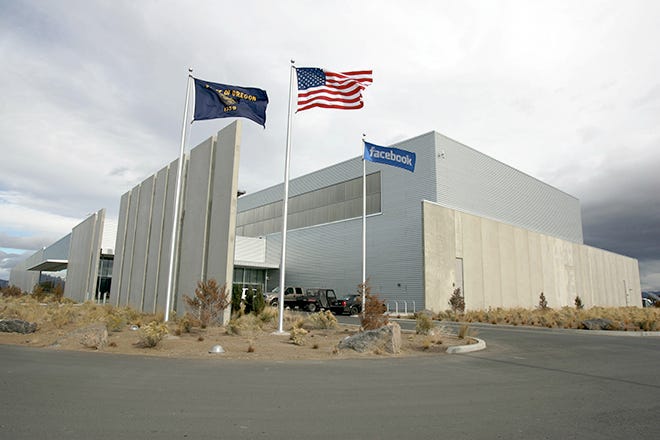Meta Wants to Make AI “Moatless"
"Open source as defense" is a time-honored strategy
When Meta first released its open source foundation AI model, LLaMA, I thought it was a shrewd move to gain public trust for a social media giant with a huge trust deficit. However, the more I think about Meta’s open source AI posture from a business strategy angle, the more I realize that the chess game is bigger than just gaining trust via transparency and earning some PR points.
Meta’s end game may be to commoditize all foundation AI models through open source, consequently rendering Google, OpenAI, or any other closed-source AI model makers “moatless”.
There is actually a series of historical examples, where open source was used as a defensive business lever, to improve a company’s positioning relative to its competitors. Meta (back then, Facebook) was the main player in one of these examples.
History of Open Source as Defense
In 2009, when Facebook’s user growth was hitting escape velocity, its infrastructure team needed to completely redesign every layer of its data center to meet this once-in-a-life-time scaling challenge. From custom software and servers, to physical racks and power supplies, every component was redesigned. This effort culminated in Facebook’s own data center located in Prineville, Oregon – dubbed the “Tibet of North America” and chosen specifically for its plentiful supply of dry, cool air sitting on a plateau 2,800 feet above sea level. (Here is a great story in Wired Magazine about the Facebook Prineville data center, published in 2011.)
Instead of keeping all this custom engineering and design work a secret, Facebook open sourced the whole thing. This move stood in stark contrast to Google at the time, who did keep all its infrastructure technology a secret. Externally, Facebook framed this decision to open source in magnanimous terms – promoting open collaboration in hardware to accelerate innovation and drive efficiency. But the business logic is to commoditize the infrastructure stack, so Facebook wouldn’t be held hostage to vendors who made money from proprietary infrastructure technology and hinder its torrid growth.
By forcing all these vendors, from server makers to telecom companies, who wanted to work with Facebook to be compatible with its open sourced design, it created an open standard that reduced the leverage of proprietary IP in the data center, rendering these companies “moatless” against Facebook. This design seeded what became the Open Compute Project Foundation, which now stewards the open data center standard initiated by Facebook more than a decade ago.
This defensive play allowed Facebook to focus on growing its user base and its data center capability unencumbered, during a time when public cloud was still a novel concept and Facebook was still figuring out its own business model. If Facebook had decided to monetize its infrastructure by offering a cloud service like AWS, this move to open source its data center design would have backfired, because that would mean turning a defensive posture into an offensive strategy. And Facebook did toy with this idea by acquiring a backend-as-a-service startup called Parse in 2013 to serve as the core of a possible cloud offering. But then Facebook figured out mobile advertising, Parse was shut down in 2017, and the rest is history.
Facebook and the Open Compute Project is one of the most illustrative, though lesser known examples of the “open source as defense” strategy. There are two other more well-known examples.
One is Google’s decision to open source Kubernetes in mid-2014. It is a container orchestration infrastructure software layer that gave Google a wedge into AWS’s then total dominance in the cloud. By switching posture from its “infrastructure is secret” days to open sourcing a core part of how Google operates its own infrastructure, Kubernetes eventually became an open standard (like Facebook’s data center design) and seeded the Cloud Native Computing Foundation (like the Open Compute Project Foundation). Its popularity forced AWS to offer Kubernetes-related services, which (somewhat) eroded its dominance and moat in cloud computing over time.
Another example that most people in tech (or even outside of tech) have heard of is the iOS versus Android story. Android is the open source mobile operating system that came out of Google to defend against the iOS ecosystem’s dominance. While it is debatable how open Android really is these days, it has been open enough to fuel many smartphone brands to compete with Apple and take market share – Samsung, Xiaomi, Oppo, Huawei, and of course Google’s own Pixel.
Bill Gurley, the famed venture capitalist, gave a succinct overview of all three examples of “open source as defense” on a recent episode of Tim Ferriss’s podcast.
Meta’s Open Source Playbook
Since the Open Compute Project, Facebook/Meta open sourced many pieces of its tech stack that became popular – database technologies (Cassandra, RocksDB, Presto), GraphQL, React, PyTorch, to name a few. This “generous” behavior was quite common among the tech giants over the last decade, many of which picked and chose pieces of technology that are not core to its business model to open source. By doing so, they were able to improve certain layers of their tech stack faster (open source tends to produce faster iterations and more secure software), keep their top engineers happy, and help recruit more engineers, most of whom prefer working at a company with strong open source ethos.
So when Meta released LLaMA as an open source project, as opposed to a well-packaged chatbot (which it did before with BlenderBot and failed), the decision was not entirely surprising. Also implicit in this decision was perhaps an admission that Meta’s foundation AI model was not as good as OpenAI’s or Google’s. But it was still speculative to frame LLaMA as an “open source as defense” strategic play to erode competitors’ moat…until last week.
Appearing on the Lex Fridman podcast, Mark Zuckerberg directly brought up Open Compute Project as a reference point, when discussing the rationale behind Meta’s AI open source strategy. Here’s the clip:
It’s now clearer than ever that Meta is dusting off the “open source as defense” playbook, with the end game possibly becoming the Android of foundation AI models. Meta may not have the best model, but even having the 3rd or 4th best and making it open source and popular among developers would speed up the erosion of any moat that having the best model may deliver. And if Meta decides to license the next version of LLaMA to permit commercial use (the current version only allows for scientific research use), that erosion will only accelerate further. OpenAI seems to already recognize just how shallow its moat is. It is rumored to be building an app-store-like marketplace for models, as a hedge against the eventuality that having the best model won’t mean much.
Of course, just because open source can be a powerful commoditization lever, that doesn’t mean closed source technologies cannot co-exist and still strive. After all, iOS and AWS are doing fine. OpenAI will do fine, even if it continues to monetize its best models while keeping them closed. But it will have to contend with Meta, a tech giant with a long history of applying open source as part of its competitive business strategy, who doesn’t plan to make a dime from foundation AI models.
If you like this post, some others you might like:
China's Underestimated AI Convening Power
Ever since Large Language Models (LLMs) became synonymous with AI, thanks to ChatGPT, the consensus is that LLMs created in China lag those from the US, and the gap will persist. For a variety of reasons – from tighter government regulations, to lack of quality training data, to difficulties in getting the best Nvidia GPUs (sanctions!) – I agree with th…
Will ChatGPT Make Baidu Relevant Again?
Thank you for subscribing to Interconnected! Before we get into today’s post, a quick ask: as I mentioned in my Interconnected Annual Letter 2022, I’m looking to connect with and learn from more family offices, especially ones operating outside the US, on how they operate, what they care about, and how they see the world. If you happen to have connectio…
AI Will Create More Developers, Not Less
Last week, I started using a new brokerage service for my investments. It is one of those brokerages that can help produce an audited track record, access to more international exchanges, and other bells and whistles designed for the “pros”. Yet, the UI and system was clunky, some buttons didn't work but produced no error messages, and dashboards were o…






